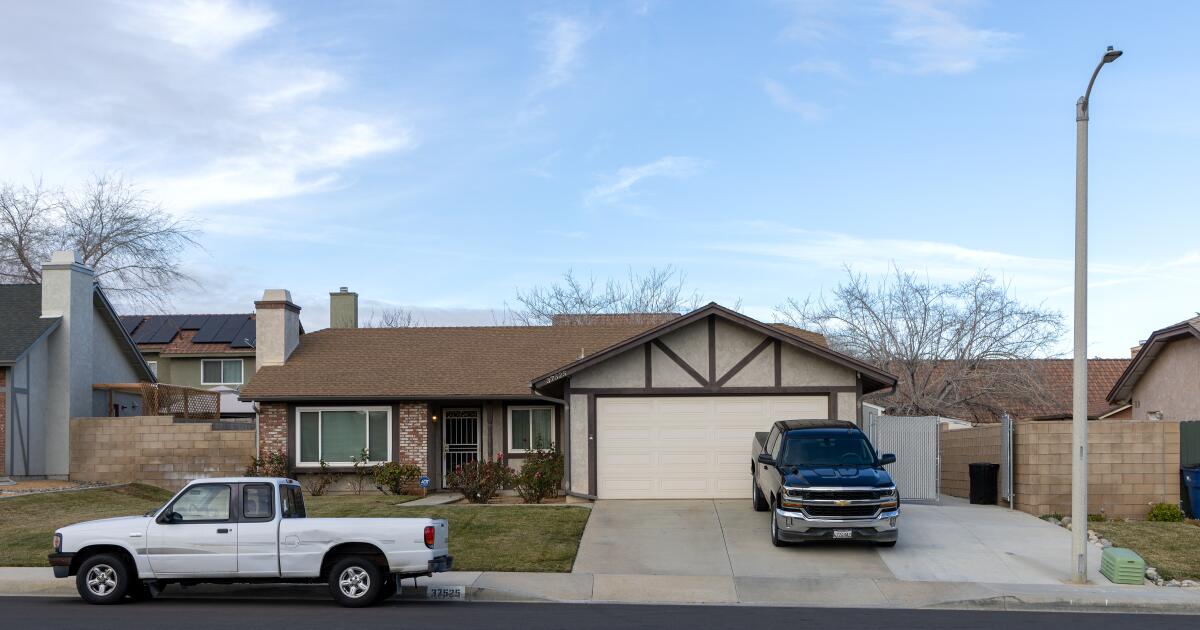Coronavirus levels have risen significantly in wastewater across the country, an indication that the summer surge continues to grow.
National measurements of the virus in wastewater reached “high” levels for the first time this summer, according to estimates released Friday by the U.S. Centers for Disease Control and Prevention. COVID-19 is growing or likely growing in 44 states and the nation’s capital, the agency reported.
And for the first time since winter, California has “very high” levels of coronavirus in its wastewater, according to CDC data for the week ending July 6. California was one of seven states in this category; the others are Arkansas, Florida, Maryland, Nevada, Oregon and Texas. Nineteen other states, spanning every region of the country, have high levels of coronavirus in their wastewater.
Coronavirus levels in California wastewater are estimated to be significantly higher than last summer. And in Northern California, two of the largest sewers, covering San Jose and Palo Alto in Santa Clara County (the most populous county in the region), reported high levels of the virus in their wastewater.
Additionally, California’s COVID test positivity rate has nearly reached last summer’s peak. In the week ending July 8, 13% of reported tests came back positive; the rate for the comparable week a month earlier was 4.8%. The latest test positivity rate nearly surpasses last summer’s peak, which was 13.1% in late August and early September.
In Los Angeles County, the most populous county in the country, coronavirus levels in wastewater have risen significantly.
Additionally, “we are seeing an increase in the number of cases, emergency room visits and hospitalizations for COVID-19,” the Los Angeles County Department of Public Health said in a statement to The Times. “It is too early to say whether or not there will be a larger wave this summer compared to last summer.”
According to the Department of Health, during the 10-day period ending June 29 (the most recent data available), coronavirus levels in Los Angeles County wastewater were 27% of last winter’s peak. That’s a significant increase from the previous comparable period, ending June 22, which was 17% of last winter’s peak.
COVID cases in the county have also been on the rise. In the week ending July 7, there was an average of 307 new cases per day, up from 121 per day the month before. The peak last summer was a daily average of 571 cases for the week ending Aug. 26.
Officially reported cases are certainly an undercount, as they reflect only the results of tests conducted in medical facilities and not tests conducted at home. Also, fewer people are getting tested for COVID when they are sick. But measuring case numbers is still useful for assessing overall trends.
The percentage of coronavirus-related emergency room visits in Los Angeles County has also increased. In the week ending July 7, 2.5% of emergency room visits were coronavirus-related; a month ago, it was 1.5%. The peak last summer was in the week ending Aug. 27, when 5.1% of emergency room visits were coronavirus-related.
The mid-year surge in COVID cases began in May and came earlier than normal. Previously, the mid-year surge in cases and hospitalizations in Los Angeles County began in early July (in 2021 and 2023), but in early May in 2022.
Kaiser Permanente Southern California continues to see an increase in cases, primarily among outpatients, officials said.
“The numbers are still slowly increasing,” said Dr. Elizabeth Hudson, regional chief of infectious diseases for Kaiser Southern California. “We’ll have to see how things play out now, because we’re past the Fourth of July and that’s when we typically start to see a bigger increase, if we see one at all.”
Health officials from coast to coast are closely watching the rise in infections. The New York City Department of Health and Mental Hygiene on Tuesday urged residents to consider wearing masks, especially in crowded indoor spaces and particularly for people at higher risk, given the rise in cases there. “Mask up, NYC!” the agency said in a social media post, which included an illustration of passengers on public transportation wearing masks.
The surge in coronavirus infections comes at a time when a new class of subvariants called FLiRT, estimated to be 20% more transmissible than the dominant winter subvariant, is on the rise. During the two-week period ending July 6, an estimated 70.5% of COVID samples nationwide were of the FLiRT subvariants, officially known as KP.3, KP.2 and KP.1.1. That’s up from 54.9% the month before.
The CDC did not identify any states where the summer wave of COVID-19 is declining or likely to decline. Three states had a stable or uncertain trend in COVID-19 cases: Hawaii, New Mexico and Oregon, according to the CDC. Estimates were not available for Missouri, Wisconsin or Wyoming.












